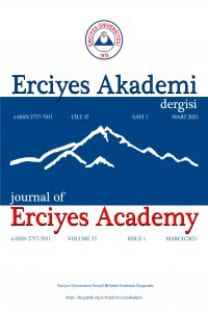Korunacak Kentsel Alanların Planlanmasında Güncel Yaklaşımlar
Dünyada 20. yüzyıl sonlarında yaşanan gelişmeler, kent planlama ve koruma konusunda da yeni yöntem ve yaklaşımların ortaya çıkmasına yol açmıştır. Geniş kapsamlı planlama anlayışı içerisinde teknik düzeyi ön planda olan planlama faaliyetleri, 20. yüzyılın sonlarında esnek planlama yöntemleri arayışı ile daha stratejik ve politik bir nitelik kazanmıştır. Küreselleşme olgusu ile birlikte yerelleşme eğilimlerinin artışına paralel olarak sürdürülebilirlik kavramı planlama ve koruma gündemine girmiştir. Bu gelişmelerin koruma düşüncesine yansıması sonucunda; genelde saklamayı hedefleyen koruma yaklaşımlarının yerini korunacak alanların, planlama bütünlüğü içerisinde kent yaşamına etkin bir şekilde katılımını hedefleyen ve kent mekanındaki tüm aktörlerin koruma sürecinde yer almasını sağlayan çözümlere yönelik arayışlara bırakmıştır. Kentsel planlama ve koruma alanındaki yeni yöntemlerin değerlendirilmesini amaçlayan bu çalışmada; kent planlama ve kentsel korumaya yönelik güncel düşünce ve yaklaşımlar, “kent planlama ile kentsel koruma sistemi ilişkisi ve bu sistemler içerisinde yetki-sorumluluk dağılımı”, “imar planlama ve koruma ilişkisi”, “kentsel korumanın ekonomik yönü” ve “planlamaya ve korumaya katılım” kavramları açısından incelenerek yorumlanacaktır
Anahtar Kelimeler:
Kent planlama, kentsel koruma, koruma planlaması ve güncel yaklaşımlar
Recent developments towards the end of the 20th century have led to the conceptualization new approaches in urban planning and conservation. The earlier understandings of comprehensive planning approaches primarily focusing on technical aspects, have gained more strategic and political properties in pursuit of more flexible planning methods. The concept of sustainability has started to be considered in planning and conservation disciplines, parallel to the rising trend of locality in globalization process. As a consequence of the reflection of these new ideas to the concept of conservation, more traditional approaches have been replaced with those seeking the active participation of all the actors in the urban life, involving them throughout the process of conservation. This study, which aimed at evaluating the new approaches to the urban planning and conservation, looks at and interprets the current concepts and approaches thorough the terms of “the relationship between the systems of urban planning and urban conservation and the sharing of authority and responsibility within these systems”, “the relationship between development planning and conservation”, “the economic aspect of urban conservation” and “participation in planning and conservation”
___
- Baer, W. C., When Old Buildings Ripen for Historic Preservation, Journal of the American Planning Association, Winter95, v61 Issue 1, p82
- Cullingworth, J. B., Alternate Planning Systems: Is There Anything To Learn From Abroad?, Journal of the American Planning Association, Spring 1994, v60, Issue 2, p162, 11p
- Feilden, B. M. and Jokilehto, J., Management Guidelines for World Cultural Heritage Sites, 122pp, ICCROM, 1993, Rome, Italy
- Gültekin, N. T., Türkiye’de Taşınmaz Kültür Varlıklarını Koruma Sürecinde Yaşanan Açmazlar, Türkiye’de Risk Altındaki Doğal ve Kültürel Miras (Ed. H. Sezgin), TAÇ Vakfı Yayınları, s:213-218, 2001, İstanbul
- Hall, P., Urban & Regional Planning, 259pp, Routledge, 1992, London
- Honey, T., The Habitat Agenda: Local Governments are Critical in Sustain- able Urban Development, Public Management (US), Dec96, 78, Issue 12, p23
- Larkham, P. J., Conservation and the City, 329pp, Routledge, 1996, London
- Lichfield, N., Economics in Urban Conservation, 361pp, Cambridge University Press, 1988, England
- Neuman, M., Does Planning Need The Plan?, Journal of American Planning Association, Spring98, 64 Issue 2, p208
- OECD (Organisation for Economic Cooperation and Development), Participatory Development: From Advocacy to Action, 1995, Washington D.C., USA
- Özel, S., Uluslararası Alanda Kültür Varlıklarının Korunması, Alkım Yayınla- rı, 1998, İstanbul, Türkiye
- Rypkema, D. D., Rethinking Economic Values, Past Meets Future: Saving America’s Historic Environments, National Trust for Historic Preserva- tion/The Preservation Press, 1992, Washington, DC., USA
- Srinivas, H., Community Groups and Planning Action, the Need for Citizen’s Participation in Decision Making, 30th World Congress of ISOCARP, 1994, Prague, Czech Rep.
- Tiesdell, S., Öç, T, Heath, T., Revitalizing Historic Urban Quarters, 234pp, But- terworth-Architecture, 1996, Boston, USA
- UNDP (United Nations Development Programme), Empowering People: A Guide to Participation, 1998, http://www.undp.org/undp/csopp
- Verwijnew, J., Introduction in Verwijnew, J. and Lehtovuori, P. eds, Managing Urban Change, 1-10, The University of Art and Design Helsinki UIAH, 1996, Jyväskylä, Finland
- Zeren, N., Kentsel Alanlarda Alınan Koruma Kararlarının Uygulanabilirliği, Doktora tezi, İ.T.Ü. Mimarlık Fakültesi, 1981, İstanbul
- Yayın Aralığı: Yılda 4 Sayı
- Başlangıç: 1987
- Yayıncı: Erciyes Üniversitesi
Sayıdaki Diğer Makaleler
Yenileşme Dönemi Eğitimcilerinin Öğretmenlik Mesleğine Bakışları
Açık Alanlarda Heykel-Çevre İlişkisi ve Tasarımı
Korunacak Kentsel Alanların Planlanmasında Güncel Yaklaşımlar
Şer’iyye Sicil Defterleri’nin Sanat Tarihi Araştırmalarındaki Önemi (Kayseri Ölçeği)
Musiki’nin Mebadi-i Riyaziyesi (Matematiksel Esasları)
Kur’an Kursu Öğreticisinin Mesleki Yeterlikleri
Cumhuriyet Dönemi Üniversite Reformları Bağlamında Üniversitelerimizde Demokratiklik Tartışmaları
